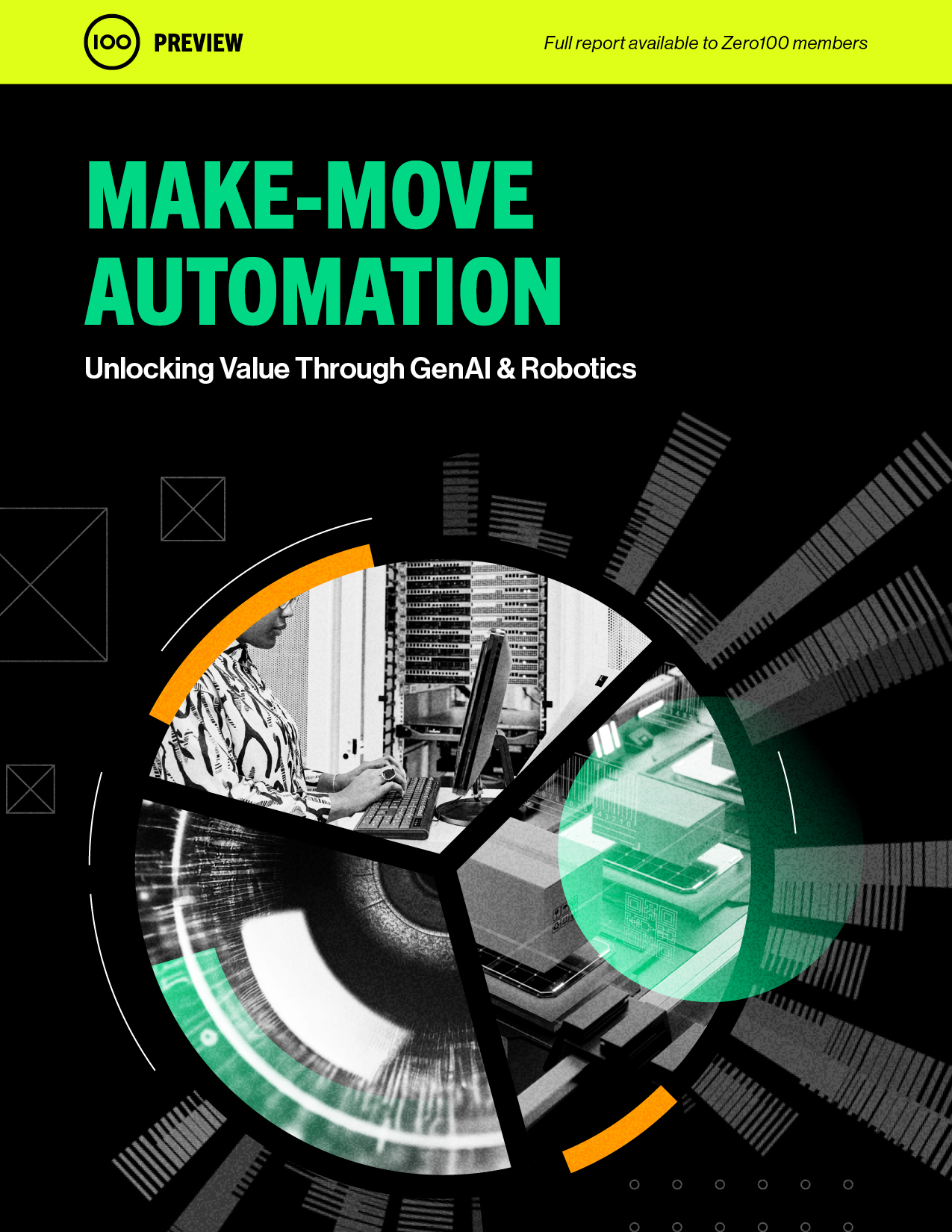
Make-Move Automation
Unlocking Value Through GenAI & Robotics
As automation enters a phase of rapid innovation and growth, the productivity and business value gains on the table are huge. But the road to success is far from straight-forward – task-level thinking just won't cut it anymore. In our latest report, we explore the three dimensions driving automation strategies in supply chain to help CSCOs and COOs capitalize on new technologies.
Want to keep reading?
Enter your details to unlock a preview of the research report.
Introduction
Robots have captured our imagination since Karel and Josef Čapek coined the term over 100 years ago and envisaged a radical future of workplace automation. Today, with genAI exploding, many expect a productivity revolution in manufacturing and logistics, with AI-empowered robots doing more of the work traditionally owned by humans. With rising labor costs and falling technology costs, traditionally human jobs, from stitching shoes to packing boxes, are increasingly in scope.
Yet, while the use of robotics in manufacturing and logistics has steadily increased, the road to automation is far from straightforward. The traditional approach—focused on the task level and justified with local headcount reductions—cannot compete with a well-conceived system-level strategy.
In this report, available now for Zero100 members, we explore the three dimensions driving automation strategies in supply chain to help CSCOs and COOs set the direction of travel for their organization.
Data
Coding and setup have traditionally been a barrier to robotics implementation, with engineers balancing upfront cost and time against longer-term productivity gains based mostly on labor savings.
But genAI is changing everything. Pioneers like Google, who developed PaLM-E and RT-2, and Toyota Research Institute (TRI), whose Diffusion Policy technique with Large Behavior Models (LBMs) is training robots overnight on hundreds of high-dexterity tasks, have shown that the same technology powering ChatGPT can be used to crack the upfront time and cost problem dogging the adoption of robotics.
To unlock these techniques, leaders will need to wrangle three separate classes of operational data describing the work: human work motion captured by cameras, traditional automation work recorded as sensor-based machine data, and data from humanoid robots working as a bridge between manual work and machine work.
People
The full exploitation of AI for Make-Move Automation depends on thinking about robotics as an amplifier for people. The challenge is to proactively engage those who can drive change and manage the new system while avoiding resistance from those who can’t.
Bringing in technical experts who can upskill their teams and help the organization collectively climb the productivity curve quicker will also make more money for shareholders. Our analysis found that the top ten companies hiring for “automation” or “robotics” plus “change management” skills were more than twice as accurate in terms of EPS guidance as the other companies in our data set.
Money
Most existing industrial robots are purpose-built machines of great complexity, made and sold only in small volumes. This means isolated investments rarely meet ROI hurdles as only a handful of jobs can be replaced with a machine.
So, when deciding where and how to invest in automation, start by thinking through the end-to-end material flow involved. This can even be done manually, with wall-sized diagrams and sticky notes as a baseline—an approach that allows teams to see and discuss the implications of each step along the way, spot mistakes or oversimplifications, and identify specific areas where robotic solutions could work.
Process flow modeling should also identify where known vendors could extend or invent new machines and offer a competitive advantage on cost, speed, flexibility, and/or precision.
The full report elaborates on these three dimensions of Make-Move Automation, sharing practical insights and case studies to inform a differentiated business strategy that drives breakthrough performance.
To access the full report, visit members.zero100.com.
If you are not a Zero100 member, please email hello@zero100.com to enquire about membership and report access.
